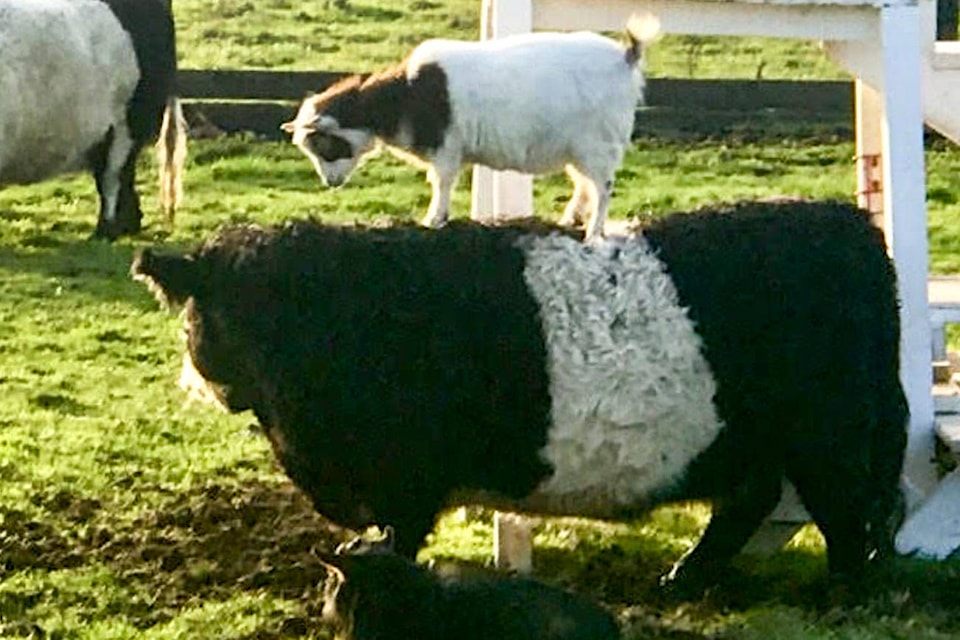Submitted by Alberta Agriculture
Many Alberta farms are particularly busy working with livestock at this time of year. Through the stress of calving, lambing, sorting, processing, and relocating: often during inclement weather, farmers and ranchers need to consider their safety and that of others while tending to their animals.
“The biggest factor in livestock handling safety is understanding animal behaviour,” says Jennifer Woods, livestock handling specialist based in Blackie, Alberta. “Workers need to be trained in this aspect before they are tasked with handling livestock. It is important to know that animals don’t necessarily react to their environment the way we would expect.”
Many times, the cause of injury to handlers is overconfidence in their ability to predict or read animal behaviour. Workers can get too complacent and not pay attention to the situation.
“What makes animal behaviour so different from humans is that animals truly live in the moment and react accordingly to the things they hear, smell, see, and feel. People usually do not perceive the same things animals perceive,” says Woods.
In general, calm animals are safer animals, and the best way to keep them calm while handling them is to reduce fear and anxiety. As a prey species, cattle have an inherent fear of unfamiliar objects, situations, smells, sudden movements, and noises. Animals that are singled out of a herd, injured or sick, are also more fearful.
Woods points out the indicators when animals tend to be more unpredictable, and handlers must be particularly cautious. They are:
• During breeding season.
• During calving/lambing/foaling.
• When animals are alone.
• When animals have been harassed by a predator.
• When animals are injured or sick.
• When animals are in an unfamiliar environment or around unfamiliar handlers.
Other factors that contribute to worker safety are the condition of the handling equipment and facilities, proximity of the handler to the livestock, and the physical size of the worker handling the livestock. Small children, for example, are at a considerable size disadvantage for many tasks. In particular, workers need to be aware when they are in the kick zone of cattle.
For long-term worker safety, Woods advises handlers to cull dangerous cows. “If there is a risk of them hurting a worker or family member, it is not worth it to keep them around. Even if that cow is a good producer, she will pass her bad behaviour on to her calves, and you don’t want that perpetuating in your herd.”
As for sheep, Woods says that, generally speaking, smaller animals tend to be the ones more likely to get hurt during processing than a worker. However, you still need to pay attention to avoid getting butted or knocked over. Extra caution needs to be taken with rams, as they can be quite dangerous. She warns that sheep can take a child out in a minute, “Adult supervisors need to make sure children are out of harm’s way during all aspects of livestock handling.”
For more information on livestock handling, visit Woods’ website livestockhandling.net. For more information about farm safety, go to the Alberta Farm Safety Program at https://www1.agric.gov.ab.ca/$department/deptdocs.nsf/All/aet623.
Connecting with municipalities
The Farmers’ Advocate Office (FAO) helps rural Albertans better understand municipal processes relating to development permits, subdivision applications, appeals, property assessments, and petitions.
“In response to recent inquiries and client files, the FAO has created a new publication called Engaging With Your Municipality. It is designed to equip and empower rural Albertans in their interactions with their local municipalities,” explains Jeana Schuurman, rural engagement and communications specialist with the FAO.
“We have seen that landowners are often unclear about what to expect during different municipal processes. Engaging With Your Municipality provides a plain language overview of what rural landowners might want to know if they are preparing for an appeal and some of the tips we have learned at the FAO,” explains Schuurman.
Engaging With Your Municipality also provides information on changes to the Municipal Government Act and Ombudsman Act that occurred in 2017, expanding the jurisdiction of the Ombudsman to include municipal decisions. “As of April 1 of this year, the Alberta Ombudsman will be able to review complaints about fair process at the municipal level,” states Schuurman. ”This process is a last resort for those affected by a municipal decision.”
Download Engaging With Your Municipality, http://www1.agric.gov.ab.ca/$Department/deptdocs.nsf/all/ofa16586.
To order a hard copy, call the Alberta Ag-Info Centre at 310-FARM (3276).
